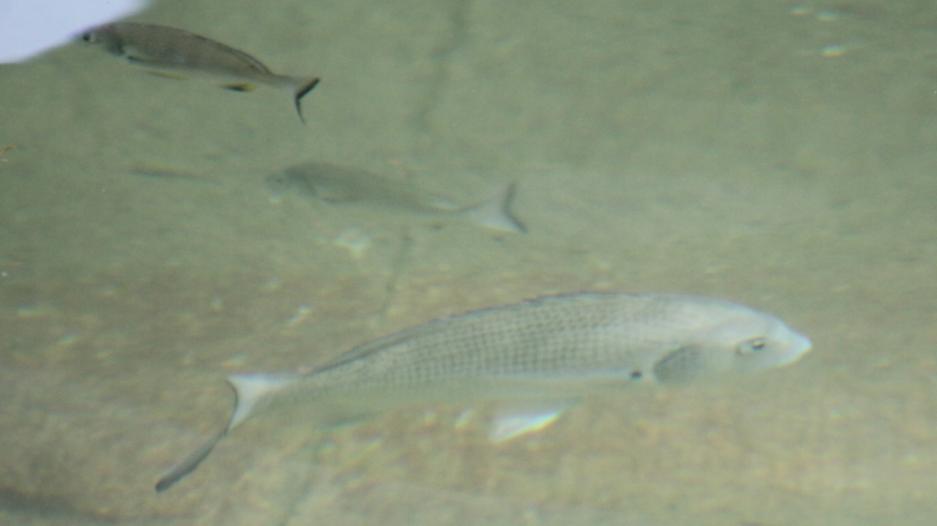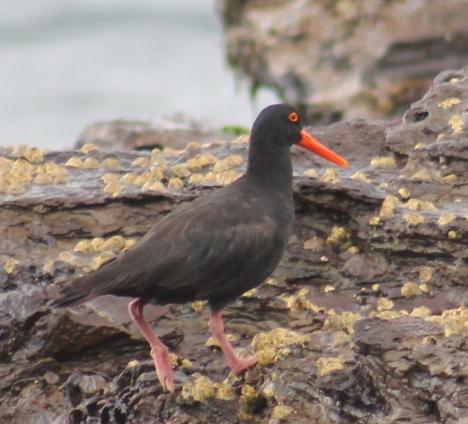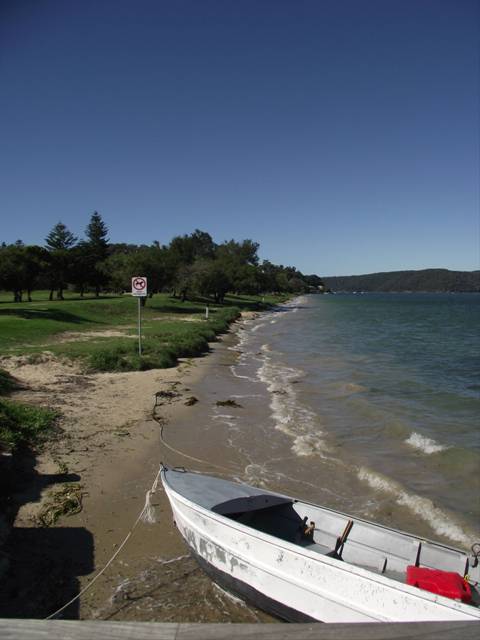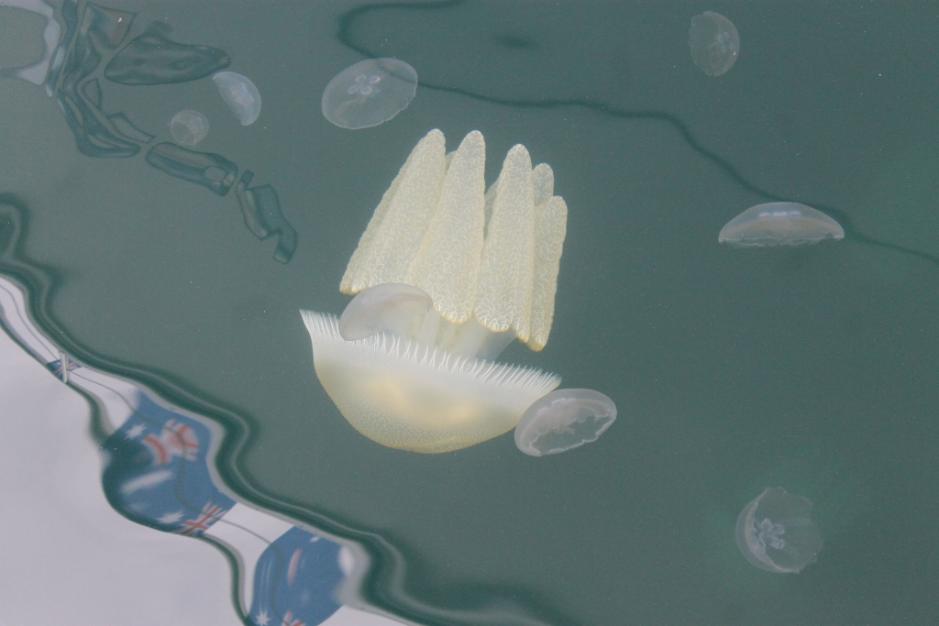October 26 - November 1, 2014: Issue 186
Marine Estate Bill 2014 Introduced Into NSW Parliament

Marine Estate Bill 2014 Introduced into NSW Parliament
On Thursday October 16th the NSW Liberals & Nationals Government introduced the Marine Estate Management Bill 2014 to the NSW Parliament. On Wednesday 22nd of October the 2nd and 3rd readings took place and the Bill passed, without amendments, to the NSW Legislative Council where the first reading took place on Thursday 23rd of October.
The Long Title of this Bill is: 'An Act to provide for the strategic exercise of government functions in the management of the marine estate of New South Wales; for the declaration and management of marine parks and aquatic reserves; and for other purposes'.
The Bill seeks to repeal the Marine Parks Act 1997.
The First Print of the Bill is available HERE for those who like to scrutinise everything for themselves.
Through the new legislation the NSW Government has committed to:
• coordinating sustainable management in line with the vision of a clean, safe, healthy, biologically diverse and productive marine estate that is enjoyed and valued
• developing a new marine estate management strategy to set the strategic direction for managing the marine estate as a single continuous system and identify management priorities
• establishing the Marine Estate Management Authority
• outlining procedures for marine park and aquatic reserve declaration and management, including the making of management plans
• undertaking appropriate and relevant community consultation and engagement.
The Minister for Primary Industries and Minister for the Environment will have joint responsibility for the Marine Estate Management Act as the current NSW government states both have a key role to play in managing the marine estate.
This has brought objections and identified potential conflicts as NSW's Nature Conservation Council Campaigns Director Daisy Barham and Independent MP Alex Greenwich have both expressed concerns over the right of veto the Minister for Primary Industries will have.
“We acknowledge the Bill seeks to institute a holistic approach to management of marine resources, which we applaud,” said Nature Conservation Council Campaigns Director Daisy Barham stated last Friday. (October 17th)
“We also welcome the continued prohibition on mining in marine parks and the inclusion of the principles of ecologically sustainable development.
“However, this Bill would also put the needs of the environment in the hands of the Primary Industries Minister, who has displayed a reckless disregard for marine conservation.
“This is the minister who has allowed fishing in protected marine sanctuaries, closed the Cronulla Fisheries Research Centre, and overturned conservation plans that took years of community negotiation to finalise.
“This proposal is like letting the Resources and Energy Minister determine when and where we should declare national parks.
“Indeed, this government has systematically wound back protection for our oceans. It’s a bit hard for the Minister to claim that the new bill is designed to increase protection of our important marine ecosystems while the government allows fishing from beaches and headlands in marine sanctuaries.
"Protection of our most important marine areas enjoys almost universal support in the community,” Ms Barham said.
“A Galaxy poll in 2014 found 93 per cent of people in NSW support marine sanctuaries, while support among recreational fishers was only slightly less, at 91 per cent.”
Nature Conservation Council Key concerns:
• For the first time, the Minister for the Environment will need the concurrence of the Minister for Primary Industries before declaring marine parks.
• There was very poor consultation in developing this Bill - only one three-hour meeting with stakeholders in March this year.
• The Bill contains proposals to reduce the consultation period for the declaration of new marine parks from 90 days to 60 days. This contradicts the government’s stated desire to improve consultation on marine management issues.
 While Mr. Greenwich has stated after the Second Reading Debate (October 22nd),
While Mr. Greenwich has stated after the Second Reading Debate (October 22nd),
"It has been widely reported that the world's commercial fisheries will collapse by 2048 if action is not taken now to protect aquatic species. New South Wales fishing industries will only survive if we protect our marine biodiversity. Science shows that marine parks and no-take sanctuary zones protect marine biodiversity and fish species. Over a thousand papers have been published on the topic and the scientific consensus is that marine parks are essential to maintaining biodiversity. Sanctuary zones, in particular, lead to dramatic increases in the number and size of fish, with effects spreading into adjacent areas, which are known to be the best fishing spots. But New South Wales has been going backwards in marine protection. I understand we are the only place in the world that has.
We have had recreational fishing permitted in shoreline sanctuary zones, a moratorium on new and expanded marine protections and some recreational fishing restrictions lifted in grey nurse shark critical habitat waters. The amnesty on shoreline recreational fishing was introduced before a six-month assessment of the practice by the independent expert knowledge panel began. If the move was not politically motivated, the Government would have waited for the panel's assessment before putting biodiversity at risk.
Sixty per cent of fishing happens from the shore and the cumulative impacts are massive. The amnesty makes New South Wales the only place in the world to allow fishing in areas set aside for recovery and it must be urgently lifted. I am relieved the marine park moratorium has not been provided for in this bill, notwithstanding the Minister's comment that the Government remains committed to it. The World Conservation Union target for sanctuary protection is 20 to 30 per cent of global waters, however, only 7 per cent of New South Wales coastal waters are protected in marine sanctuaries.
"I share community concern that the Minister for Primary Industries should not have a veto power over new marine protections. Biodiversity protection has always been the responsibility of the environment Minister and this has ensured that vital declarations for long-term sustainability are made based on science. The Minister for Primary Industries is accountable to industry, including fishing industries, and this could relegate environmental sustainability below industry demands and flies in the face of claims that this Government will base marine protection on science not politics. While industry should have a say and be consulted, the final decision on declaring marine protections must be about environmental sustainability and left wholly with the environment Minister."
The allowing of fishing in NSW Marine Parks was also soundly objected to by 222 of Australia's preeminent marine scientists on January 14th this year:
"We the undersigned marine scientists are concerned that the integrity of the NSW marine parks network and marine conservation objectives will be severely undermined by Government moves to allow recreational fishing in sanctuary zones.
From the cool waters in the south to the warm waters of the north, the coral reefs, estuaries, seagrass meadows, sandy beaches, rocky headlands, kelp beds, sponge gardens, subtidal and deep-water rocky reefs, sandy plains and seamounts in NSW support a rich mix of tropical and temperate marine life. This includes marine turtles, tropical fish and manta rays in the north, blue devilfish, weedy seadragons, fur seals and sharks down south, and humpback whales seasonally migrating along the 2000-kilometre NSW coast.
The NSW marine parks network began its protection of marine life in 1991 with the establishment of the Solitary Islands Marine Park. Since then five other marine parks have been created, each after extensive scientific research and community consultation, and each linking with the Commonwealth marine bioregional plans. The knowledge
and expertise of the NSW marine science community has been critical to building the network. In response to the feedback received during the zoning process, the current network (before the government’s action) allowed for all forms of recreational fishing in about 93% of the NSW coastal environment (>10,000km2). It also set aside about 1,800km2 of the coast (~17%) as “Habitat Protection Zones” which allow nearly all forms of recreational fishing but only a very limited set of commercial activities.
In contrast to these transparent and well-informed zoning processes, the NSW Government decision in March 2013 to temporarily allow recreational fishing in sanctuary zones off beaches and headlands was not based on any scientific research or consultation, and failed to establish the necessary scientific protocols for the monitoring
of impacts on marine life that would result. It is now of significant concern to the marine science community that what was announced as a temporary lifting of restrictions on recreational fishing in sanctuary zones may become a permanent feature of marine parks management in this state. Such a move would represent a considerable step backwards in environmental awareness in the country’s most populous state and as such has drawn the attention of inter-state and international marine scientists.
Sanctuary zones free of extractive activities, such as recreational fishing i.e. ‘no-take’, must be the corner stone of marine conservation. Their prime purpose is the conservation of marine life and ecological processes, but there is increasing evidence from Australia and overseas that sanctuary zones can help reverse the decline in marine health, build the resilience of marine life to climate change, and serve as buffers against overharvest which often occurs under conventional fisheries management.
The habitats in sanctuary zones off sandy beaches and rocky shores, where restrictions on recreational fishing have been temporarily lifted, are vital for many fish communities. These areas are also likely to be the most heavily exploited due to ease of access by fishers. The most recent data indicates that recreational fishers take a quarter or more of the catch in 11 of the state’s top 20 harvested species including those commonly found in
beach/headland habitats such as whiting, flathead, bream, luderick, tailor, snapper, kingfish and leatherjackets.
To suggest, as the government is doing, that risk and threat assessment in combination with fisheries management are sufficient for marine conservation, fails to understand the fundamental difference between the management of resource exploitation and the conservation of biodiversity. The latter seeks to preserve habitats and species in a natural state while the former seeks to optimize harvest. Thus even when done perfectly,
management of resource extraction cannot deliver the marine conservation benefits that a network of marine parks with sanctuary zones can provide.
The signatories to this statement urge the NSW Government to reinstate the protection levels for sanctuary zones by no longer allowing recreational fishing of any form within them, and to work with the marine science community to establish a scientific research program that targets knowledge gaps and supports evidence-based decisions about marine conservation planning."
The 222 signatories to this Statement dated 13 January 2014 follow in alphabetical order.
 In the same pond, recreational fishers are having to adjust to new fishing rules which have seen bag limits for some of our most popular fish halved. ANSA NSW President, Stan Konstantaras, in an interview published by Fishing World in September 2014, stated,
In the same pond, recreational fishers are having to adjust to new fishing rules which have seen bag limits for some of our most popular fish halved. ANSA NSW President, Stan Konstantaras, in an interview published by Fishing World in September 2014, stated,
"The Minister must not forget that this announcement is only a small part of the equation and issues like water quality, habitat degradation and destructive commercial fishing practices had to be addressed as part of the bigger picture. Asking recreational anglers to take another hit again was not fair when the nothing much else was being done to protect the resource from environmental vandals and commercial fishers,”
“We all know no habitat equals no fish so more needed to be done to protect and restore the environment as well," Mr. Konstantaras said.
"We need a Resource Assessment in NSW to see what we actually have out there and whilst we have taken a hit on bag limits it is time for more recreational fishing havens in NSW and greater access in Marine Parks in NSW to offset some of the socio-economic downturn that these daily bag limit reductions might have on visitors to smaller regional tourist towns in NSW," he concluded.
Key changes include, which will apply to recreational saltwater and freshwater fishers from 3 November 2014 :
• bag limit reduced from 20 to 10 for Flathead species (other than Dusky Flathead), Bream and Tarwhine, Tailor, Blue Swimmer Crab, Trevally and Luderick. The possession limit of 20 will remain for these species;
• catch and release requirement (maximum size limit) introduced for Murray cod caught at more than 80cm (the current minimum size limit of 60cm remains);
• spawning closure for Australian Bass and Estuary Perch extended to four months to protect early migrating bass. Catch and release will be permitted during the closure;
• number of witches hats/hoop nets/lift nets reduced from five to four and increase the number of crab traps from one to two in saltwater.
• change of marking requirements of recreational nets and traps to specify trap type, fisher’s initial and surname, year of birth and postcode;
• and fishers will now be permitted to use five hoop nets to take yabbies in Lakes Lyell, Lake Wallace and Googong Dam.
Ms Hodgkinson said of the 16 changes, five include minor rule adjustments to reduce red tape and streamline fishing rules. The full list may be accessed at HERE
Minister for Primary Industries, Katrina Hodgkinson, and Minister for the Environment, Rob Stokes, said in their Media Release of October 16th that the Bill will put in place the legislative framework to deliver a comprehensive new approach to the management of the marine estate.
 The NSW marine estate includes marine waters out to three nautical miles, estuaries, coastal wetlands, lakes and lagoons, and adjacent land influenced by ocean processes.
The NSW marine estate includes marine waters out to three nautical miles, estuaries, coastal wetlands, lakes and lagoons, and adjacent land influenced by ocean processes.
